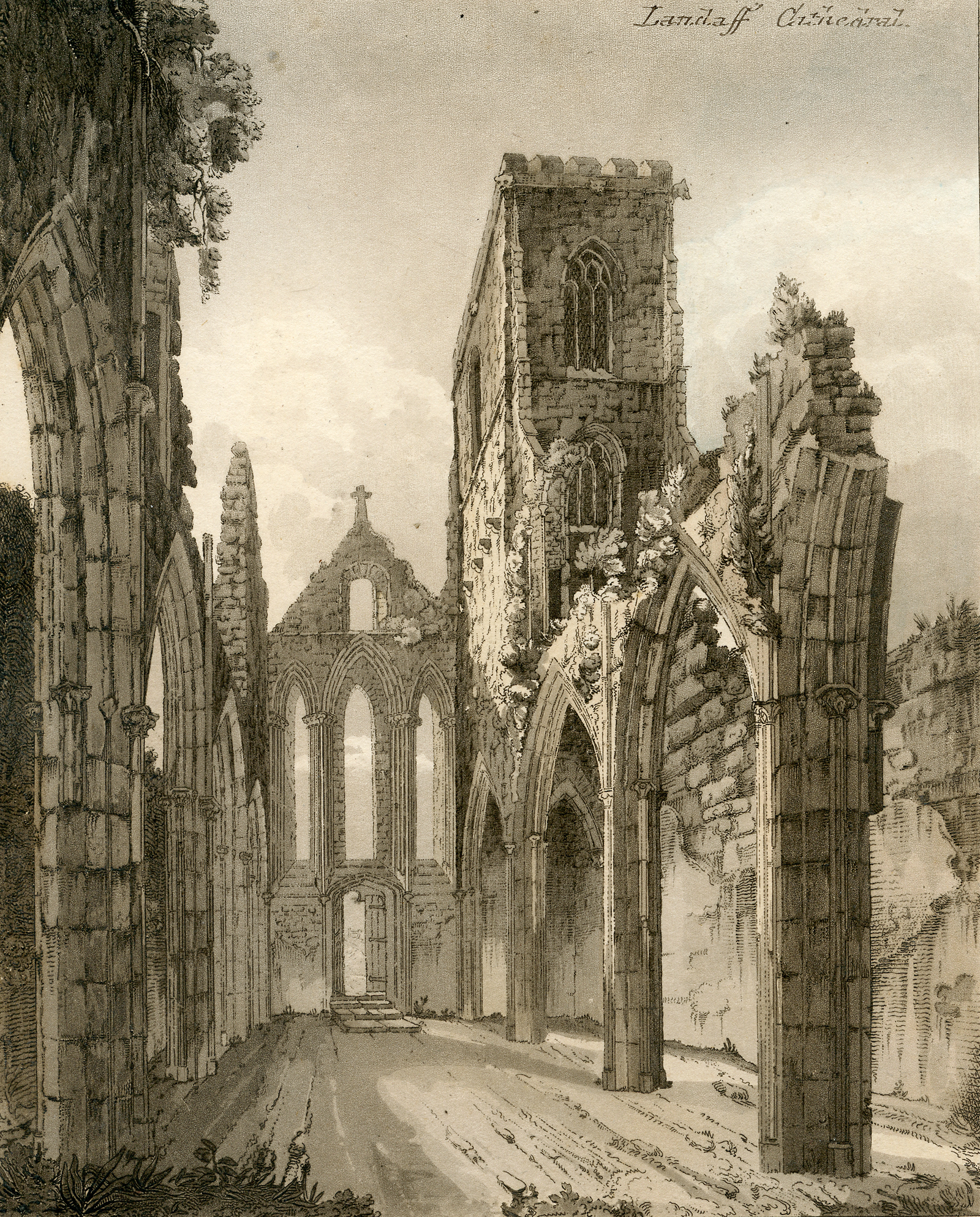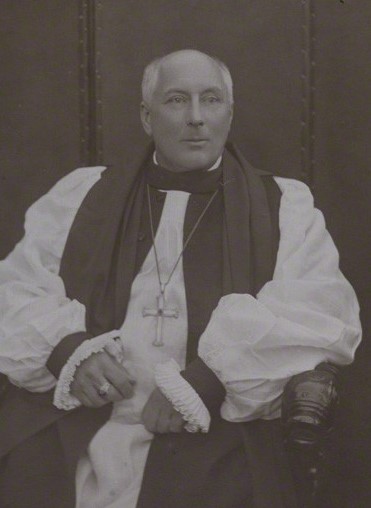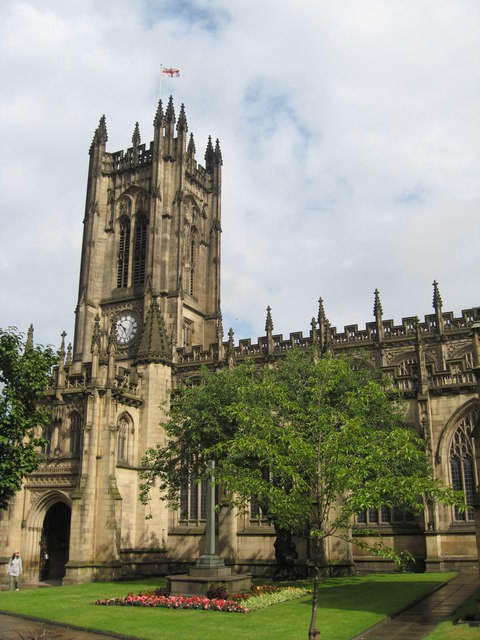|
Deans Of Llandaff
Dean of Llandaff is the title given to the head of the chapter of Llandaff Cathedral, which is located in Llandaff, Cardiff, Wales. It is not an ancient office – the head of the chapter was historically the Archdeacon who appears in this role in the ''Liber Landavensis'' and in the Chapter Acts preserved in the Glamorgan Records Office – but the office of a separate Dean was established by act of parliament in 1843. A century later the Deanery was merged with the Vicarage of Llandaff. The Chapter forfeited its legal rights on Disestablishment in 1920, when the Dean and Chapter as an ecclesiastical corporation was dissolved, under the terms of the Welsh Church Act 1914. There continues, however, to be a Dean and Chapter under the scheme or constitution made under the Constitution of the Church in Wales. Deans of Llandaff *1840–1843 John Probyn (archdeacon and dean) *1843–1845 William Bruce Knight *1845–1857 William Conybeare *1857–1877 Thomas Williams *18 ... [...More Info...] [...Related Items...] OR: [Wikipedia] [Google] [Baidu] |
Llandaff Cathedral
Llandaff Cathedral ( cy, Eglwys Gadeiriol Llandaf) is an Anglican cathedral and parish church in Llandaff, Cardiff, Wales. It is the seat of the Bishop of Llandaff, head of the Church in Wales Diocese of Llandaff. It is dedicated to Saint Peter and Saint Paul, and three Welsh saints: Dubricius ( cy, Dyfrig), Teilo and Oudoceus ( cy, Euddogwy). It is one of two cathedrals in Cardiff, the other being the Roman Catholic Cardiff Metropolitan Cathedral in the city centre. The current building was constructed in the 12th century on the site of an earlier church. Severe damage was done to the church in 1400 during the rebellion of Owain Glyndŵr, during the English Civil War when it was overrun by Parliamentarian troops, and during the Great Storm of 1703. By 1717, the damage to the cathedral was so extensive that the church seriously considered the removal of the see. Following further storms in the early 1720s, construction of a new cathedral began in 1734, designed by John Wood, t ... [...More Info...] [...Related Items...] OR: [Wikipedia] [Google] [Baidu] |
Henry Lynch Blosse
The Ven. Henry Lynch Blosse was an nineteenth century Anglican priest. The son of the 8th Baronet, he was educated at Trinity College, Dublin. After a curacy in Cardiff he was the Rector of Michaelston Le Pit, near Cardiff in 1838 then incumbent at Newcastle, Bridgend from 1839 to 1877. He became Archdeacon of Llandaff in 1859. He held this post until 1877; after which he was Dean of Llandaff until his death on 28 January 1879.'' Deaths. Dean of Llandaff'' The Times ''The Times'' is a British daily national newspaper based in London. It began in 1785 under the title ''The Daily Universal Register'', adopting its current name on 1 January 1788. ''The Times'' and its sister paper ''The Sunday Times'' (fou ...(London, England), Wednesday, Jan 29, 1879; pg. 6; Issue 29477 References 1812 births 1879 deaths Alumni of Trinity College Dublin Archdeacons of Llandaff {{Wales-bio-stub ... [...More Info...] [...Related Items...] OR: [Wikipedia] [Google] [Baidu] |
Bishop Of Monmouth
The Bishop of Monmouth is the diocesan bishop of the Church in Wales Diocese of Monmouth. The episcopal see covers the historic county of Monmouthshire with the bishop's seat located at the Cathedral Church of Saint Woolos in Newport, which had been elevated to that status in 1921. The bishop's residence is Bishopstow, which is in central Newport. The diocese is one of two new ones founded in 1921 when the Church in Wales became independent of the established Church of England. The most recent bishop was Richard Pain, who had previously been the Archdeacon of Monmouth before being elected Bishop of Monmouth. The previous bishop was Dominic Walker OGS, previously area Bishop of Reading in the Church of England and who retired on 30 June 2013. The Diocese of Monmouth has also produced a number of Archbishops of Wales, most notably Rowan Williams, who was subsequently appointed Archbishop of Canterbury in 2002 - the first Welsh bishop to hold that post since the English ... [...More Info...] [...Related Items...] OR: [Wikipedia] [Google] [Baidu] |
Eryl Thomas
Eryl Stephen Thomas (20 October 1910 – 6 December 2001) was a Welsh Anglicanism, Anglican clergyman who served as Bishop of Monmouth and Bishop of Llandaff. An Anglesey man, after education at St John's College, Oxford, St John's College, Oxford, Eryl Thomas served curacies in the Diocese of St Asaph before being appointed to a parish (Risca) in South Wales then as Warden of St Michael's College, Llandaff. He was appointed Dean of Llandaff in 1954, and in this post completed the restoration of the war-damaged cathedral begun under his predecessor Glyn Simon. Stephen Thomas was in many ways a charismatic figure, he was renowned for his pastoral and preaching gifts, but he could also divide opinion. He vigorously exposed an important case of misuse of funds in the Church in Wales, incurring thereby some ill-will, and his opposition to the Sunday Closing (Wales) Act 1881, Sunday closing legislation applicable to Welsh public houses irritated Nonconformist temperance movement, abs ... [...More Info...] [...Related Items...] OR: [Wikipedia] [Google] [Baidu] |
Archbishop Of Wales
The post of Archbishop of Wales was created in 1920 when the Church in Wales was separated from the Church of England and disestablished. The four historic Welsh dioceses had previously formed part of the Province of Canterbury, and so came under its Archbishop. The new Church became the Welsh province of the Anglican Communion. Unlike the Archbishops of Canterbury and York, who are appointed by the King upon the advice of the Prime Minister, the Archbishop of Wales is one of the six diocesan bishops of Wales, elected to hold this office in addition to their own diocese. With the establishment of the new province, there was debate as to whether a specific see should be made the primatial see, or if another solution should be adopted. Precedents were sought in the early history of Christianity in Wales, with St David's having a debatable pre-eminence among the sees. A Roman Catholic Archbishopric of Cardiff had been created in 1916. Instead, it was decided that one of ... [...More Info...] [...Related Items...] OR: [Wikipedia] [Google] [Baidu] |
Bishop Of Llandaff
The Bishop of Llandaff is the ordinary of the Church in Wales Diocese of Llandaff. Area of authority The diocese covers most of the County of Glamorgan. The bishop's seat is in the Cathedral Church of Saint Peter and Saint Paul (the site of a church traditionally said to have been founded in 560 by Saint Teilo), in the village of Llandaff, just north-west of the City of Cardiff. The bishop's residence is Llys Esgob, The Cathedral Green, Llandaff, in Cardiff. Brief history The controversial Iolo Manuscripts claim an older foundation dating to Saints Dyfan and Fagan, said elsewhere to have missionized the court of King Lucius of Britain on behalf of Pope Eleutherius around AD 166. The manuscripts—others of which are original and others now known forgeries—list Dyfan as the first bishop and, following his martyrdom, Fagan as his successor. Baring-Gould refers to them as chorepiscopi. The present-day St Fagans (referenced in the manuscripts as " ... [...More Info...] [...Related Items...] OR: [Wikipedia] [Google] [Baidu] |
Bishop Of Swansea And Brecon
The Bishop of Swansea and Brecon is the Ordinary of the Church in Wales Diocese of Swansea and Brecon. The diocese covers the City and County of Swansea and the ancient counties of Brecknockshire and Radnorshire. The diocesan cathedral is the Cathedral Church of Saint John the Evangelist in the town of Brecon, which has been a parish church since the Reformation, becoming elevated to cathedral status in 1923. The diocese is administered from Brecon, with an additional office in Swansea. The Bishop's residence is Ely Tower, Brecon. The office was created in 1923 at the founding of the diocese, an area stretching south to the coast of Gower and north into much of mid-Wales. Immediately prior to the diocese's erection, the first bishop, Edward Bevan, had served as Bishop of Swansea, a suffragan in the Diocese of St Davids. [...More Info...] [...Related Items...] OR: [Wikipedia] [Google] [Baidu] |
Glyn Simon
William Glyn Hughes Simon (14 April 1903 – 14 June 1972) was a Welsh prelate who served as the Anglican Archbishop of Wales from 1968 to 1971. Early life Simon was born in Swansea, where his father was curate at St Gabriel's church. He was baptised by David Lewis Prosser, later to become the third Archbishop of Wales. Educated from 1913 at Christ College, Brecon, Simon went to Jesus College, Oxford in 1922 where he studied Greats. He trained for the priesthood at St Stephen's House, Oxford, and was ordained deacon at Chester Cathedral in 1928, being appointed to the parish of St Paul's Crewe. Career In 1931 Simon became warden of the Church Hostel at Bangor; the poet R. S. Thomas was a resident student there in 1932, and touchingly, would go on addressing Simon as "Dear Warden" in letters to him even when he was Archbishop. In 1939 he was appointed warden of St Michael's College, Llandaff, and in 1941 he married, which some colleagues felt improved his interpersonal skills. ... [...More Info...] [...Related Items...] OR: [Wikipedia] [Google] [Baidu] |
David John Jones
David John Jones (31 December 1870 – 14 March 1949) was a Welsh Anglican priest, who served as Dean of Llandaff from 1931 to 1948. Life Jones was educated at Jesus College, Oxford, obtaining a third-class degree in theology in 1893. He then studied for the priesthood at St Michael's College, in Aberdare, south Wales, and was ordained in 1894, becoming curate in Llanelli. In 1897, he returned to St Michael's College as chaplain, becoming vicar of St Theodore's Port Talbot in 1901, then vicar of Roath in 1920. He was appointed Dean of Llandaff in 1931, retiring as Dean Emeritus in 1948. He died in Cardiff Cardiff (; cy, Caerdydd ) is the capital and largest city of Wales. It forms a principal area, officially known as the City and County of Cardiff ( cy, Dinas a Sir Caerdydd, links=no), and the city is the eleventh-largest in the United Kingd ..., aged 78. References {{DEFAULTSORT:Jones, David John 1870 births 1949 deaths Alumni of Jesus College, Oxford 20th-c ... [...More Info...] [...Related Items...] OR: [Wikipedia] [Google] [Baidu] |
Dean Of Manchester
The Dean of Manchester is based in Manchester, England and is the head of the Chapter of Manchester Cathedral. The current dean is Rogers Govender MBE. List of deans *1840–1847 William Herbert *1847–1872 George Bowers *1872–1883 Benjamin Cowie (afterwards Dean of Exeter, 1883) *1884–1890 John Oakley *1890–1906 Edward Maclure *1906–1918 James Welldon *1918–1920 William Swayne (afterwards Bishop of Lincoln, 1920) *1920–1924 Gough McCormick *1924–1931 Hewlett Johnson (afterwards Dean of Canterbury, 1931) *1931–1948 Garfield Williams *1949–1953 Leonard Wilson (afterwards Bishop of Birmingham, 1953) *1954–1963 Herbert Jones *1964–1983 Alfred Jowett *1984–1993 Robert Waddington *1993–2005 Ken Riley *2005–present Rogers Govender Christianity in Manchester * Dean of Manchester The Dean of Manchester is based in Manchester, England and is the head of the Chapter of Manchester Cathedral. The current dean is Rogers Govender MBE. List of ... [...More Info...] [...Related Items...] OR: [Wikipedia] [Google] [Baidu] |
Garfield Williams
Garfield Hodder Williams (21 November 1881 – 8 August 1960) was an eminent Anglican Priest in the second quarter of the 20th century. Born into an eminent publishing family in Bromley on 21 November 1881, he was educated at the City of London School and Barts. Eschewing a medical career he undertook missionary work at home and abroad before being ordained in 1914. After this he was Principal of St Andrew's College, Gorakhpur. He was appointed an Officer of the Order of the British Empire in the 1919 New Year Honours for his services as editor of the ''War Journal'' while living in the United Provinces during the First World War. He returned to England following the war and was an Assistant Master at Rugby School. He was Secretary of the Missionary Council of the National Church Assembly from 1924 to 1929 when he was appointed Dean of Llandaff. Two years later he became Dean of Manchester. He died on 8 August 1960.''Obituary Dr. Garfield Williams Former Dean Of Manches ... [...More Info...] [...Related Items...] OR: [Wikipedia] [Google] [Baidu] |
Frederick Worsley
Frederick William Worsley (1873–1956) was Dean of Llandaff from 1926 until 1929. Biography Worsley was born in Singapore and educated at Brighton College, King's College, London (), University College, Durham ( MA, DD) and Clare College, Cambridge ( MA). He was ordained in 1897. After curacies in Barnes and South Kensington, he was Vicar of Corringham. He was on the staff of St Michael's College, Llandaff, from 1914 to 1926, during which period he was also a Chaplain to the Forces from 1915 to 1919. He was interviewed on 29 October 1915 and was described as married with 5 children and medically fit for service at home and abroad. In November 1915, he was posted to France and attached to a Casualty Clearing Station. He was ill with trench fever in August 1916 but returned to duty one month later, serving in England, in France with the British Red Cross and in Italy. In 1919, he was promoted from 4th to 3rd Class and, from 1921, was an Honorary 4th Class chaplain. In June 1930 ... [...More Info...] [...Related Items...] OR: [Wikipedia] [Google] [Baidu] |





